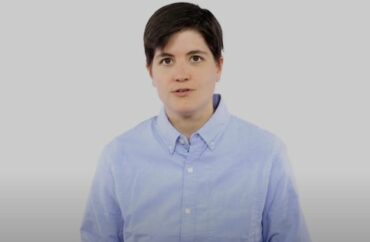
OPINION: Brown professor blames ‘structur[al] issues for minor enrollment gaps among both sexes, different races
Female students at Brown University are not enrolling in STEM degrees at the exact same rate as male students due to sexism, according to a professor who also works as an “equity consultant.”
The Brown Daily Herald recently surveyed 1,177 undergraduate students on their majors. This represents about 15 percent of all undergrads.
Approximately 45 percent of females are majoring in the “physical sciences” compared to 59 percent of males, according to the survey. The poll also provides data on students who are “neither male nor female” (about 40 percent of Brown students say they are LGBT).
For insights, the student newspaper turned to Katherine Rieser, who does not teach in any of the physical sciences departments. Rather, she directs the graduate program in teaching and is a senior lecturer in education, according to her university bio. However, she is a “race and equity consultant” according to her curriculum vitae.
Rieser, as reported by the campus newspaper, “attributed these differences to ‘structurally racist or gender biased policies’ in education, which she says have catalyzed discrepancies between gender and race.”
She (pictured) said some students “are either experiencing stereotypes (or) threats and are less likely to pursue a goal for that reason.”
But even female students or racial minorities who enroll in STEM may still be harmed, Rieser opined. “Even if the person is successful, they can end their time spent in the subject feeling less a sense of job satisfaction or less a sense of inclusion and belonging.”
She also pointed to a “structured history” and called for a “structured reality,” to “systematically recruit students from historically underrepresented backgrounds.”
There are several problems with her logic.
First, the fact almost 45 percent of female Brown University students enroll in STEM classes undermines claims of widespread “structured” problems. If the enrollment was 10 or 15 percent it might be worth exploring. But plenty of Brown University female students feel perfectly fine enrolling in physical sciences programs.
Second, women outnumber men at Brown University about 52 percent to 48 percent, according to the Integrated Postsecondary Education Data System. About 52 percent of freshmen in fall 2022 were women; those students are now in their junior year.
MORE: San Jose State women’s volleyball crushes with male players
Assuming the class of 2026 stays roughly the same size (the retention rate is 99 percent), that means there are about 395 junior female students in physical sciences majors (888 females multiplied by 44.5 percent) and 493 junior male students in the same programs (829 males multiplied by 59 percent).
If a physics class has, let’s say, 50 students, that means about 30 will be male and 20 will be female. I doubt a female student who sees 19 girls will feel isolated. We’re talking about an elite university here, after all.
Furthermore, the claims of racial gaps do not hold up when looking at the student newspaper data.
While 58 percent of Asian students enroll in physical sciences majors, all other races are about equal in enrollment – this includes 45.4 percent of black students, 46.7 percent of Hispanics, 47.4 percent of Middle Eastern or North African, and 50 percent of white students.
If five percent of black students or three percent of Hispanics enrolled in STEM that might be worth further study (or could suggest mismatch).
But if about half of all racial groups feel socially comfortable enrolling in physical sciences, it undermines arguments for widespread issues, even if some departments see a problem.
“Brown’s Division of Biology and Medicine alone has ten student groups dedicated to providing an affinity space for members of underrepresented students,” the student newspaper reports.
Brown University students have shown by their own actions that they are fine enrolling in physical sciences degrees and the school doesn’t need an “equity consultant” to suggest there are “structured” problems.
MORE: Penn works with Harris adviser’s group for voter outreach
IMAGE: Harvard Graduate School of Education/YouTube
Like The College Fix on Facebook / Follow us on Twitter







Please join the conversation about our stories on Facebook, Twitter, Instagram, Reddit, MeWe, Rumble, Gab, Minds and Gettr.